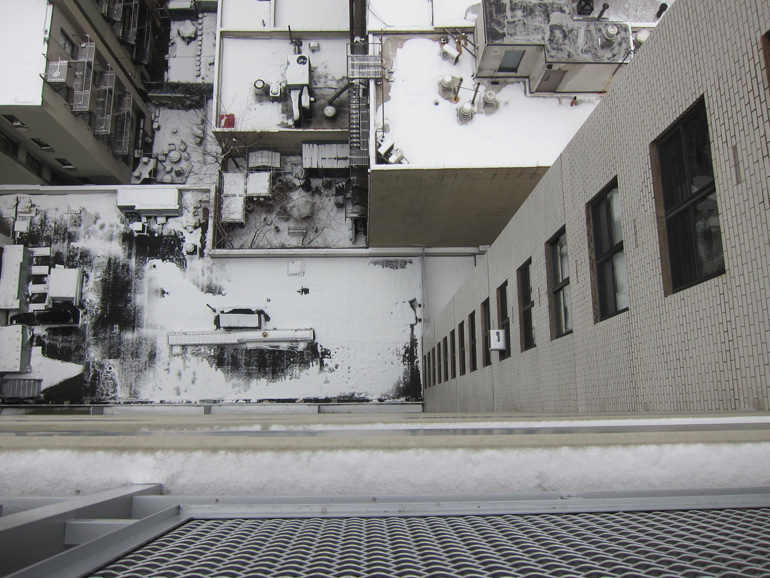Gotham Diary:
Convalescening Backward
18 February 2014
When I sat down to write a brief entry this morning, the server was down, having developed a problem over the weekend that didn’t surface until this morning. The site — both sites, actually — had to be restored, and yesterday’s entry would have been lost to the ages (perish, &c) had I not saved a preview copy. From now on, I’m backing up the entries myself, using Notepad. Considering all the other mindless hoops that I have to jump through every day, the backup is not much of an extra. It will be my way of signing off, as it were, on the proofreading.
But this entry will be brief. I have a little rule that forbids me to say that, unless there’s a good reason for the brevity, as today there is. The Remicade infusion is scheduled for Thursday. I’ve been doing fairly well, covering the terra incognita into which I crossed when the infusion couldn’t be given at the normal (for me) 13-week interval; but on Sunday afternoon, I fell into a kind of stupid fatigue for which there was no ordinary explanation. The same thing happened yesterday: I breezed through morning routines only to run out of energy after lunch.
It wouldn’t be worth talking about, if I hadn’t had what seems to me an interesting insight into what life is like when the Remicade runs out. It’s not like illness. I don’t feel that I’m sick, or even getting sick. No, what I feel goes at the other end of malady: convalescence. The crisis is over, the pain abated — but the body is ravaged by the fight. Convalescing, your strength comes back to you in small waves. But for me, it’s precisely that that’s reversed. It’s like going at illness from the wrong end, and I have no idea where it will take me. I don’t expect to be ill, quite, but every day, I feel my strength ebbing. It’s not altogether physical, either. Decisions are hard to make, especially where desire ought to factor into the choice. For example: what to eat when you’ve no real appetite. It would be heaven if someone would bring in trays of bland food from time to time. Some of my best memories of undergraduate life are of just such meals, brought to my bed in the Notre Dame infirmary, where I spent a few weeks one year with mononucleosis, and then again, sometime later, with pneumonia.
As it is, I have only to pick up the phone. But which number to dial? I’m very tired, as this long winter grinds on, of everything that’s available in the the neighborhood’s subway-shriveled cornucopia.
***
A word about Barbara Stanwyck, who has been much in the buzz, what with the chattering classes’ awakening to the idea that Stanwyck was one of the great Hollywood stars. Not requiring any persuasion on this point myself, I’ve simply nodded sagely at hearing her mentioned. But I was reminded, casting about for a movie to watch this afternoon, that a DVD of one of her films has been languishing at the back of the cupboard, a loan from Ray Soleil — a loan so overdue that it has been converted into a gift by Ray’s purchase of another copy — Lady of Burlesque (1943).
This is not to be confused with Ball of Fire, the terrific action comedy that she made with Gary Cooper and Dana Andrews in 1941. The closest to a “costar” that Lady of Burlesque has to offer is Charles Dingle, a Will-Rogers-y character actor who plays one of Regina’s nasty brothers in Bette Davis’s Little Foxes. Everyone else — you’ve never heard of them. (Although Michael O’Shea, the jeune premier, kept reminding me of Bill Clinton.) The production values are a notch better than those of the average Charlie Chan feature. The music is barely passable, and the screenplay is corny and boring by turns — whatever colorful bits might have held the reader’s attention to Dixie Rose Lee’s G-String Murders has been bleached to beige.
What makes the movie awful, though, is Stanwyck herself. She’s simply too good for it, too good by light years. She makes everyone else onscreen look like a high-school thespian. Much as you want her to, she makes no attempt to steal the spotlight. It would be a stretch to argue that her part is inherently better than anyone else’s, even if it is the lead; she doesn’t really have “more to work with.” But every time that she is in the frame, Lady of Burlesque is worth watching. And then — she’s gone! — it is maddeningly not.
That’s why I recommend seeing this movie at least once. I don’t know what brought Stanwyck to Hunt Stromberg’s production company, but my guess is that she was doing somebody a favor. Did it cross her mind that she might be making a bomb? Probably not. Movies with budgets like this one’s didn’t bomb; because of the exhibition system then in place, they couldn’t. Only big, ambitious, expensive movies could bomb. And Lady of Burlesque isn’t a bomb, insofar as it involves here: that’s the miraculous point. The role suits her (as anyone seeing Ball of Fire could have predicted), and she flies with it. You get to see what a star can do with almost no help at all.

